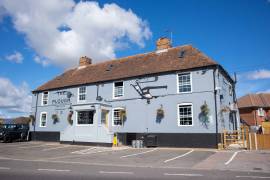Dealing with troubled sites

The pub companies mostly sold off what they thought were their bottom-end sites or those that would struggle in the face of the smoking ban, ahead of it starting. The failing economy, however, has provided them with another bottom-end problem almost immediately, not helped by more red tape and excessive duty increases.
Those pubs that would have needed help in turning around their performance at some stage over the next two to five years — of a normal economy — are now having that potential underperformance concertinaed into a matter of months.
Working out what happens to the pubs at the bottom is one of the most intractable situations in the industry. I think that in the current climate, the traditional response to bottom-end pubs — selling them — might have to be put on hold until the credit markets reopen. If this proves to be the case, then pub landlords will have to be more creative in working out how to keep pubs open, either where there are only temporary tenants, or try to reincentivise those tenants/lessees running bottom-end sites who do not consider themselves "temporary".
We all know that the troubled sites take up a significantly greater degree of management time than those where the licensee is on top of events or, in the current climate, managing to keep his/her head above water.
One solution might be to offer some of those bottom-end pubs a free-of-tie (FOT) tenancy or lease, allowing the licensees to keep all of the machine income. This might do a number of things:
1. Remove the arguments about fairness of the machine element of turnover-related rent (although I suspect that HMRC will be the biggest loser here, as cash from machines is more than likely going to be declared at a lower level for tax purposes).
2. Possibly reduce the moaning element of the licensee population. It would highlight to those who think the FOT solution is the universal panacea, that it does in fact result in a significant increase in fixed costs at a time of trading uncertainty, and that brewers may not give the discounts or the range on the large scale that is currently enjoyed from pubcos. Where do beer prices go up most frequently? The freetrade.
3. FOT rents may also have to take into account the attractiveness, or otherwise, of the accommodation that comes with the pub, though I suspect that all parties would fight against such a proposition.
Going back to the old system of how brewers ran the business is not possible in today's climate either. Even those that are still in brewing realise that they rarely achieved a commercial return on their property assets pre the Beer Orders, and with beer pricing now much more transparent, getting the brewery to subsidise the rent is not something that any finance director would accept.
What we also do not want is for pub assets to be valued like commercial property, because then every pub would have a FOT lease and little or no investment, and licensees' cash flows would struggle with rents payable quarterly in advance, as opposed to the current monthly system. With the benefit of the tie, around 30% to 40% of the total rent payable for a pub flexes weekly as well.
If there is a problem with rents, then it has to be resolved carefully, with due regard for the relative capital contributions that go into the pub.
The wider industry has also to recognise that people wanting to run a pub have options as to how to get involved — renting on a short or long-term basis, managing or buying.
Too many wet-led pubs
What the current debate is maybe highlighting, or bringing to a head, is that the natural demand for pubs as pure drinking places, as opposed to those with a much broader spread of sales, has declined faster than the die-hards in the industry had believed. That maybe there are too many pubs and the problem is not "not enough licensees", but "too many wet-led pubs".
After all, the number of full on-licences has actually increased by 9% since 1990, while the number of "pubs" has declined by more than 12%. These are unpalatable facts to some, but the answer for those that want to retain their unprofitable drinking pubs is to either buy them or go there more often.
This is the process that has driven the industry restructuring since the Beer Orders, and it is one that is likely to speed up as the industry recovers or maybe even before that, if the credit market reopens. After all, Gordon Brown still wants to build three million houses on everyone's back gardens, and there remains a chronic shortage of potential residential development sites.
The industry has had its ups and downs, and this is definitely the worst down that we can remember, but the rental issue is only part of the problem. The solution still has to be on a pub-by-pub basis.
We can see the pub property landlords needing to become more creative in the current environment, but at least they have become much more caring, and what shouldn't be overlooked is the material investment that has gone into the pub estates, which dwarfs the rent concessions and discounts that everyone talks about.
Geof Collyer is a leisure analyst at Deutsche Bank














